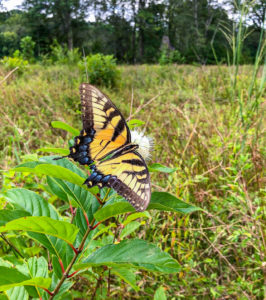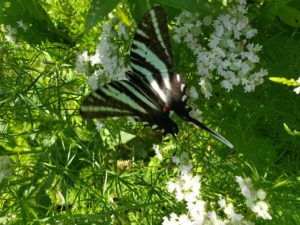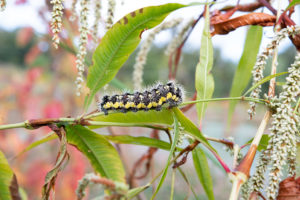
April showers bring May flowers, the saying goes.
But what do May flowers bring? They bring pollinators.
Bees, butterflies, birds, and others you might not suspect (like flies, moths, beetles, bats, and small mammals) all work to pollinate plants.
In fact, pollinators are necessary for the fertilization of at least 75% of the world’s flowering plants. That’s over 180,000 different types of plants, of which over 1,200 are used for food.
These plants not only provide us with food, but also cleaner water, cleaner air, and more oxygen. They also help stabilize our soils and provide food and shelter for other wildlife.
It’s estimated that one out of every three bites of food you eat—be it fruit, vegetable, seed, or the animals who feed on those things—is thanks to pollinators.
Pollinators are that important, which is why there’s a whole week to not only celebrate them, but also educate and raise awareness about them and their importance to all life on the planet.
How GreenVest Helps Pollinators

Pollinators need a clean and healthy environment to prosper. At GreenVest, we constantly strive for ecological uplift and resultant habitat improvements. We use nature-based solutions to restore and protect ecosystems, improving water quality for flora and its pollinating fauna. Our projects achieve improved functionality, sustainable environmental quality, and related socioeconomic benefits.
For example, our BARC (Beltsville Agricultural Research Center) Wetland Mitigation Project, restored 18 acres of headwater wetland habitat, 4.6 acres of upland habitat, and over 4,600 linear feet of stream habitat across 3 adjacent projects.
The BARC project led to measurable water quality and habitat improvements in the Anacostia Watershed, welcoming native plants such as the black-eyed Susan and Virginia spring beauty. These plants attracted local pollinators, like bumblebees, eastern tiger swallowtails, and monarch butterflies.
How You Can Help Pollinators
You, too, can help pollinators find the homes and flowers they need to thrive. Other than steps you are currently taking to limit your environmental impact—like reducing, reusing, and recycling—there are things you can do in your own backyard to bolster the pollinator community.
The U.S. Forest Service offers some steps to create a pollinator-friendly environment. Here are four of our favorite tips:

1. Include plants for caterpillars to eat
Planting flowering plants for butterflies makes sense, but don’t forget that butterflies start as caterpillars—and caterpillars need food too! So, plant them some. Just remember that they will get eaten so they won’t look pretty, but the butterflies that emerge later will be.
2. Offer other foods to butterflies
Butterflies love to eat nectar, but that’s not all they need. Overripe bananas and other fruits are both attractive and nutrient-rich treats. A sponge soaked in salty water (use sea salt for more micronutrients) is also very delicious to our fluttery friends.
3. Build a bee condo
This one might not be for everyone but providing a place for native bees to nest is invaluable to pollinating plants in your areas. This can be as simple as a dead tree limb or as fancy as a bee condo you build yourself.
4. Plant native plants that bloom from early spring to late fall
Native plants will grow best in your region, and they’ll be the ones local pollinators will be searching for. Plant them in clumps and take care to choose plants that flower at different times of year to give our little friends food for longer. Don’t forget to plant some that bloom at night for the moths and bats!
For more information on pollinators, their importance, and how to attract them to your garden, take a look at this resource from the U.S. Forest Service. Happy National Pollinator Week from GreenVest!



